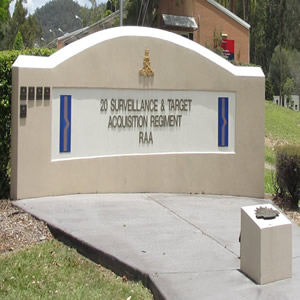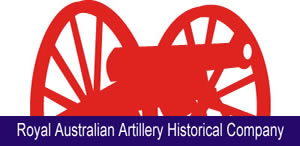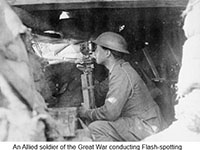|
||||||||||||||||||||||||||||||||||||||||||||||||||||||||||||||||||||||||||||||||||
| Have a Question / Feedback ? | Submit | Search Our Site |
|
20 SURVEILLANCE AND TARGET ACQUISITION REGIMENT
|
||||||||||||||||||||||||||||||||||||||||||||||||||||||||||||||||||||||||||||||
 |
||||||||||||||||||||||||||||||||||||||||||||||||||||||||||||||||||||||||||||||
 |
||||||||||||||||||||||||||||||||||||||||||||||||||||||||||||||||||||||||||||||
| Artillery Surveillance and Target Acquisition (STA) is one of three streams within the Royal Regiment of Australian Artillery (the other two being Field Artillery, and Ground Based Air Defence). 20th Regiment, RAA is the Australian Army’s only Artillery STA unit; it is part of the 6th Brigade and located at Gallipoli Barracks, Enoggera.
The STA Regt is responsible for managing the commander’s counter-fire fight through the integration and synchronisation of target acquisition assets and effects. Counter-fires is a critical STA and joint fires responsibility; unless enemy artillery is suppressed, they will be free to strike friendly targets, break-up friendly force concentrations, and provide fire-support to enable hostile ground manoeuvre. The STA system combines the means of acquiring information and targets, and carrying out an appropriate level of target information processing. The STA system incorporates a cyclical process which informs, directs and updates the priorities and the rate of the collection effort. Funnily enough, the principal tasks for STA are ‘surveillance’ and ‘target acquisition’.
Role The role of the Artillery STA Regt is to conduct systematic surveillance, accurate target acquisition, reconnaissance and targeting to enable the effective application of joint fires and effects (lethal and non-lethal). History of Artillery STAThe colossal volume and usage of artillery during the First World War necessitated the need to find enemy guns, in order to counter them. Thus, ‘locating’ artillery came to prominence with its focal areas of flash-spotting, counter-bombardment, survey, calibration and meteorology. During the Great War, sound ranging capabilities were developed that could – for the first time – detect and respond to enemy indirect fire weapons. Artillery ‘locating’ was cutting edge, and ‘target acquisition’ had been born.
Since the end of the First World War, surface-to-surface fires capabilities have undergone tremendous developments, mostly linked to improved range and munitions. Similarly, artillery locating and target acquisition capabilities have progressed commensurately. The most notable development occurred around the time of the Second World War: the radar. Constantly refined ever since, the primary weapon of artillery STA over the past seventy years has been the Weapon Locating Radar. Of course Artillery calibration, survey, meteorology and sensor2 capabilities have also continued to develop exponentially.
Core tasks of Artillery STA The core tasks of the STA Regt are as follows:Intelligence, Surveillance, Target Acquisition and Reconnaissance (ISTAR) Planning ISTAR planning sees the integration of ISTAR planning teams into JIATF, JTF, Brigade and BG headquarters. These teams plan and coordinate the execution of ISTAR operations on behalf of the manoeuvre commander. These planners provide the linkage between collection operations and joint fires and effects, through the manoeuvre operations function.Surveillance and Reconnaissance Operations Surveillance and reconnaissance operations include the conduct of tactical tasks within the battlespace as planned by ISTAR planning teams to support the commander’s information requirements. This can consist of tasks such as focal, area and route surveillance and/or focal, route and target reconnaissance.Manoeuvre Support Operations Manoeuvre Support Operations involve the use of ISTAR capabilities in direct support of the execution of manoeuvre operations. This can consist of the provision of near real- time information to the commander in order to enable decision making. Information can be provided via voice, data, imagery and full-motion video.Targeting Operations Targeting operations provide targeting support through the coordination of joint fires and effects engagements, using ISTAR sensors, with a primary focus of executing counter- fires tasks. Targeting operations involve the target acquisition and subsequent coordination of engagements in support of joint fires and effects, through cooperative engagement. Targeting operations include tasks such as call for fire (surface fires), laser target designation, manned-unmanned teaming (attack aviation), target hand-off and target mensuration.What does 20 Regt (Army’s ST A unit) consist of and provide? 20 Regt consists of four sub-units: Ops Spt Bty (C3 of the Regiment, SUAS capabilities,3 ISTAR planning support to DJFHQ/HQ 1 Div/JTF), 131 Bty and 132 Bty (TUAS capabilities,4 ISTAR planning support to JTF/Bde/BG HQ), and CSS Bty (maintenance and logistics support to the entire Regt). From 2022, an additional TUAS sub-unit (133 Bty) will be activated.
The future of Australian Artillery STA
|
||||||||||||||||||||||||||||||||||||||||||||||||||||||||||||||||||||||||||||||
Everywhere Whither Right and Glory Lead |
||||












.jpg)